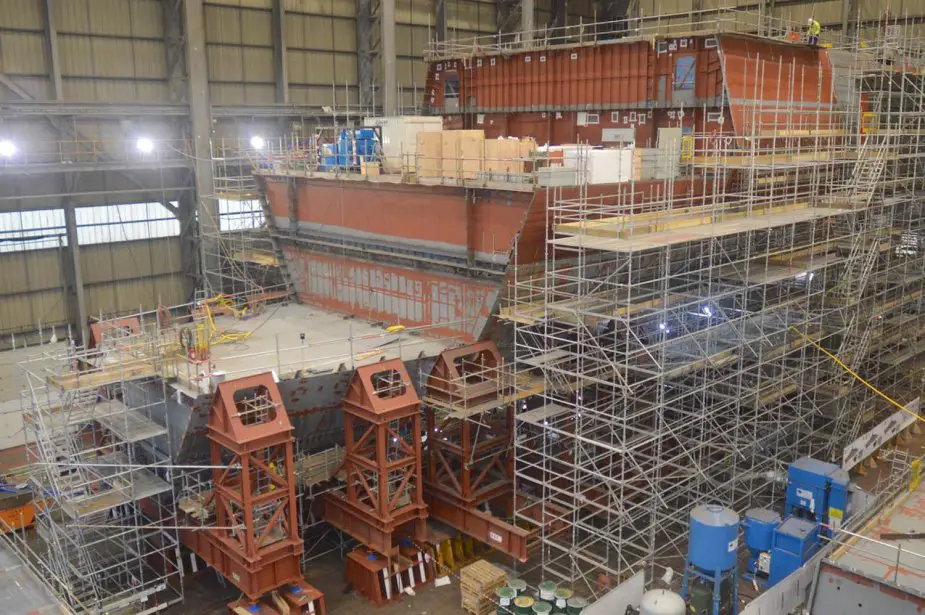Breaking news
Royal Navy's future type 26 frigate HMS Glasgow more than half built.
Construction of the future HMS Glasgow, the lead ship of the Royal Navy’s future Type 26 frigates, is advancing at BAE’s Govan shipyard; seen here is the ship’s forward section more than half-way built.
 Future HMS Glasgow of Royal Navy (Picture source: Royal British Navy)
Future HMS Glasgow of Royal Navy (Picture source: Royal British Navy)
This is HMS Glasgow – the first of the Royal Navy’s next-generation frigate flotilla – more than half-way through construction.
Or rather this is part of the forward section of the ship – the fore and aft sections of the 8,000-tonne warship are being built separately; the aft is currently hidden behind lots of tarpaulin, and not especially photogenic presently we’re told.
In fact, the ship is being built in numerous sections – or ‘units’, each one constructed in BAE’s fabrication facility at their Govan yard.
From there, once complete, the units are wheeled to the ship block and outfit hall where they are joined together and pipes and cabling linked up.
Just over half of HMS Glasgow is now complete or under construction, out of eight planned vessels in the class (all are named, three have been ordered, two are in build at Govan – HMS Cardiff is No.2).
Once the fore and aft sections are complete they will be joined on the hard in front of the block hall, before the bridge/mainmast are craned into place.
The completed ship will then be ‘launched’ by being lowered into the Clyde via a barge, then towed downstream to BAE’s yard at Scotstoun to complete fitting out.
The 26s replace the ‘souped-up’ anti-submarine Type 23s which will begin retiring from service later this decade after more than 30 years on patrol, while still to come are five Type 31 general duty frigates which have yet to be ordered/named and will replace their five Type 26 counterparts like for like.
Well over 1,500 people are involved in the Type 26 programme – not just at BAE on the Clyde but nationwide – with an estimated 3,400 jobs created or supported when construction is in full swing.




























